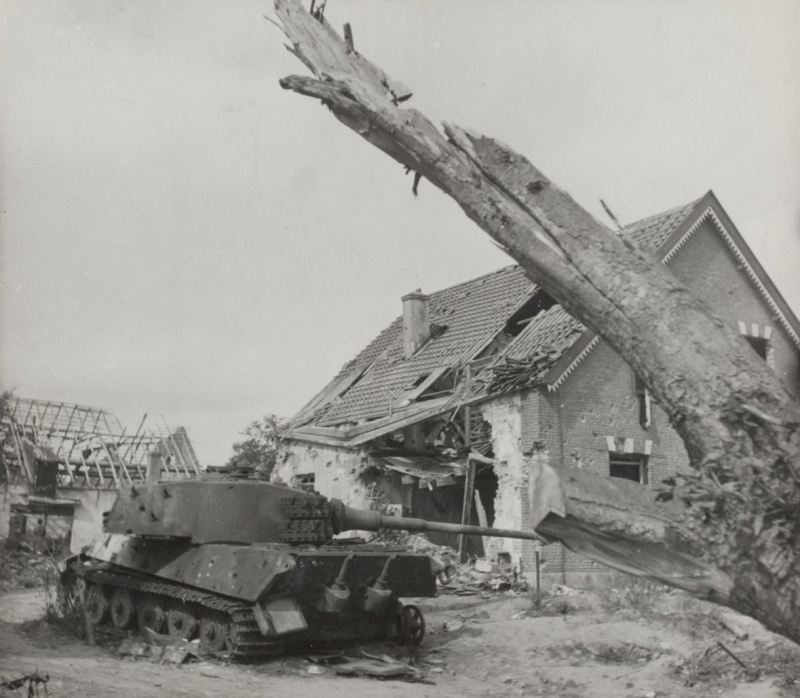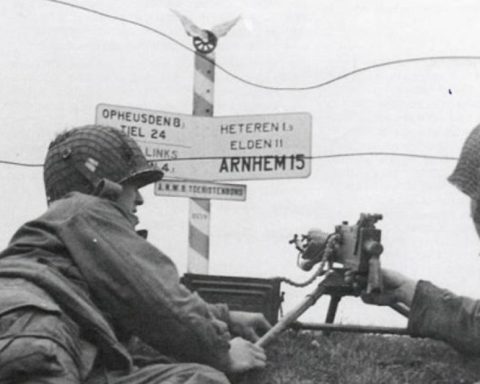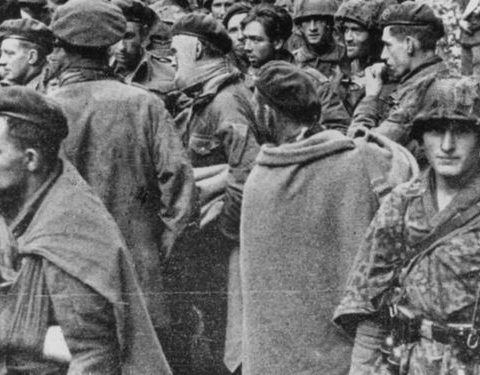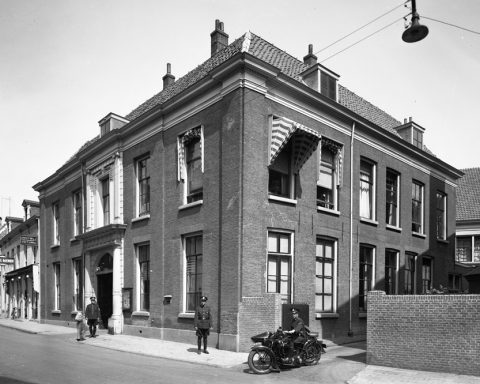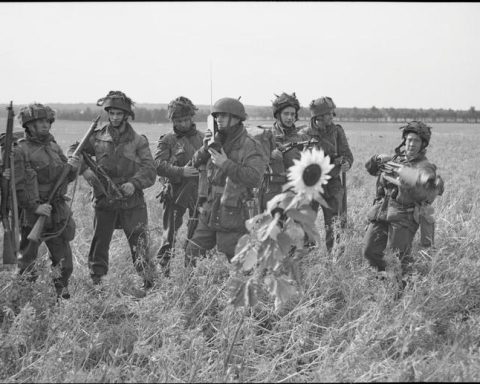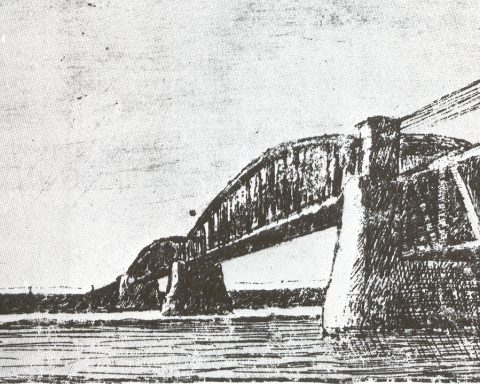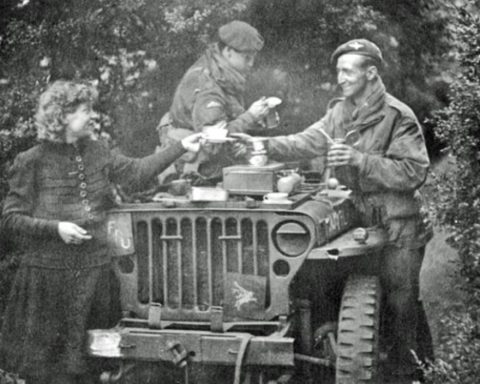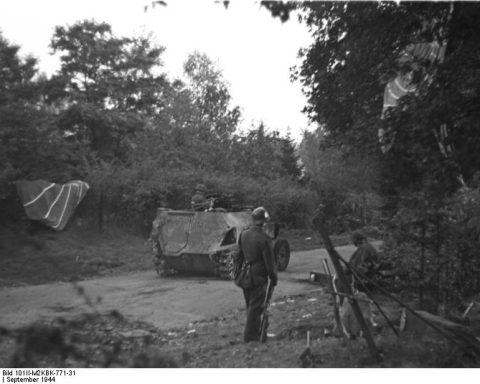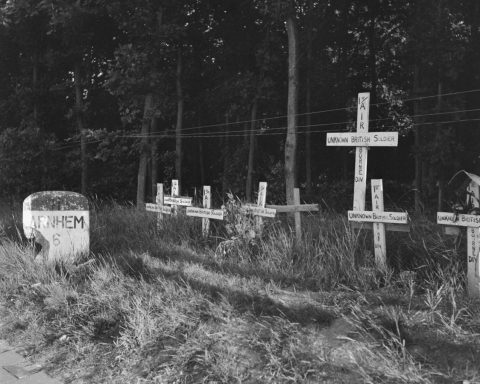The pressure from Hitler’s headquarters to destroy the British in the ‘ Hexenkessel ‘, the witches’ cauldron, in Oosterbeek became increasingly greater. On Monday, September 25, the Germans around Oosterbeek did everything they could to deliver the final blow to the British.
As on the days before, the Germans bombarded the British positions with everything they had in mortars and artillery. The Germans had more than a hundred artillery pieces around the British positions in Oosterbeek and they fired mortars and grenades in the direction of the British all day long. That morning, an officer at the Hartenstein hotel recorded 135 mortar and grenade hits near the headquarters in 45 minutes.
In the meantime, new German reinforcements had arrived at Oosterbeek, including the 506th Schwere Panzer Abteilung. It consisted of 15 Tiger II tanks: the newest and heaviest tanks that the Germans had at their disposal. The Tiger tanks were actually too heavy for the streets in Oosterbeek.
General Walter Harzer, of the 9th SS Armored Division: “When the Tiger tanks turned a corner, the paving stones flew in all directions.”
Supported by the Tiger tanks and the other Panzers the Germans had at their disposal, a major attack was carried out on the south-eastern side of the British defenses. The aim of the attack was to cut off the connection with the Rhine, so that the British were completely surrounded by the Germans.
Rattling tanks
The Lonsdale Force, which defended the British sector east of the Oude Kerk in Oosterbeek, had a hard time. For the first time that week, the Germans succeeded in breaking through the British positions with their attacks.
“There are few sounds more frightening than the rattle of approaching tanks,” wrote Major Blackwood of the Lonsdale Force afterwards.
Urquhart: “One of our artillery batteries was overpowered and for some time there were quite a few Germans in the area we had chosen as an escape route. The artillery soldiers managed to turn their guns and fire at the Germans who were less than fifty meters away.”
By using the artillery in this unusual way, the British managed to drive out the Germans, against high German losses.
Major Robert Cain had already managed to take out several tanks earlier that week. During the German attacks of September 25, he added a few new tanks. After the Battle of Arnhem, Caine was honored with a Victoria Cross, the highest British military award.
With virtually no ammunition left for the PIAT anti-tank rifles, Cain used a 2-inch mortar in his battle against the Germans.
“By skillful use of his weapon and his courageous leadership of the few men still under his command, he completely demoralized the enemy. He withdrew chaotically after a battle of more than three hours,” said Robert Cain’s nomination for the Victoria Cross.
Artillery bombardment
Also just north of the Lonsdale Force positions, between the Rhine and Hotel Hartenstein, the Germans managed to break through the British lines.
As the day progressed, more and more German soldiers managed to penetrate the British lines. That afternoon, a German unit penetrated the forest between Hartenstein and the Rhine to within 200 meters of the division headquarters. The British then called in the help of the 64th artillery regiment, which was located near Nijmegen. The British artillery unit was actually asked to fire on its own British positions.
Urquhart: “Rarely has an artillery bombardment taken place under such strange circumstances.”
Thanks to artillery support and after a fierce British counterattack, the British managed to restore the defensive line late in the afternoon. The battered Germans withdrew.
By the early evening the German attack on the British positions was over. The British had also managed to hold their ground on Monday, September 25, although only just in the nick of time. After the fighting, the soldiers were informed by their officers of the decision to leave the perimeter that night and withdraw across the Rhine.
“It was a bitter moment, but with no food or ammunition left, the anti-tank guns disabled and the men walking around like zombies after nine days of shelling and mortaring, there was no alternative,” said one of the airborne soldiers.

